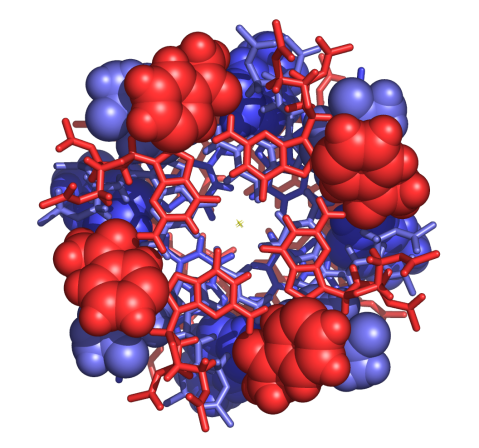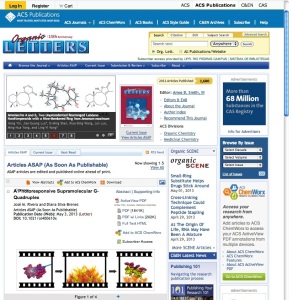By Valeria Burgos Caldero
The main purpose of this article was to synthesize multi-responsive polymers that could be reversibly modified to adjust their LCST. Indeed, these researchers were able to develop a system in which multiple thiol exchanges were made, and in turn, they could determine how the thiols affected the transition temperature of the polymer. They used a copolymer containing P(TEGA) and DMMA. By performing transmission measurements at various temperatures, they concluded that as the thiol changed, the transition temperature of polymer varied depending on the resulting hydrophobicity. More polar functionalities increased the transition temperature and less polar ones decreased it. They were able to demonstrate the reversibility of the modifications since they managed to return to their original functionality after various thiol exchanges. Finally, they implemented a fluorescence signal to monitor the reaction progress. They found that thioglucose quenches the polymer’s fluorescence while making the compound soluble throughout the range of temperatures. With these findings, a wide range of possibilities were opened, since now, if you want a polymer for a specific type of function where a specific temperature response is needed, it is easily accessible by adding the corresponding thiol to the polymer solution. The mechanism of turning off the fluorescence may give access to reversible systems in aqueous conditions.
In general, I found it much simpler to prepare for this article than for the first one I presented. I feel that by doing these exercises of presenting scientific articles I have been acquiring maturity in the analysis process since it was difficult for me to understand articles in the beginning. Something that I found missing in the article is that they never explained the experimental procedure on how they achieved reversibility after adding different thiols to the same sample. I liked that they used common thiols, some of which we use in our research and others that maybe we could apply. In general, the article relates a lot to the research I’m doing with Diana. It could be useful to try to see the stimuli-responsive variations in the compounds that we are synthesizing. Maybe because it is related to variations in functionalities with thiols, similar to my own research, I found it more enjoyable to prepare the discussion and understand the material in the article.



 Below are the references to our last three papers. I will post a brief overview of each one soon, but in the meantime:
Below are the references to our last three papers. I will post a brief overview of each one soon, but in the meantime:

